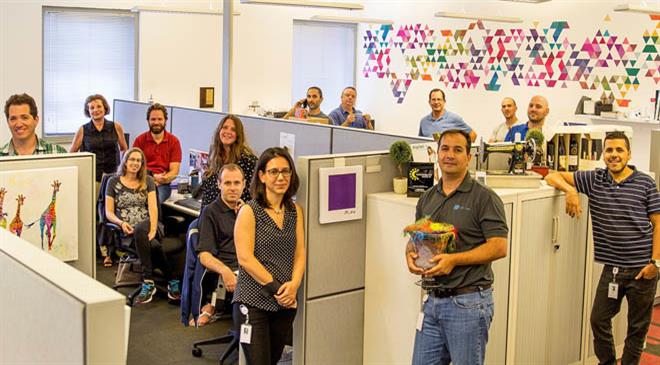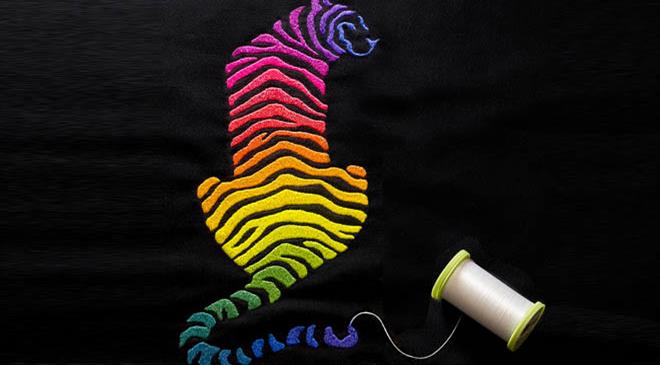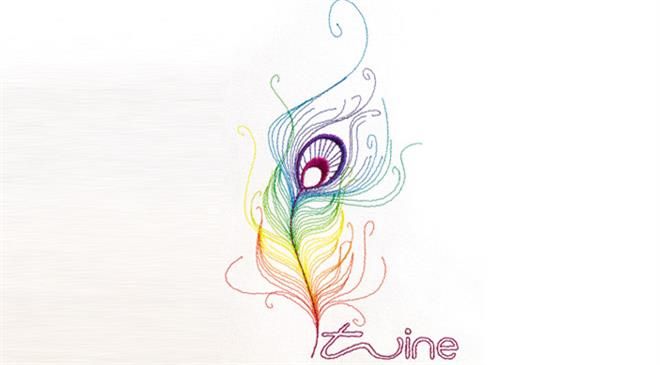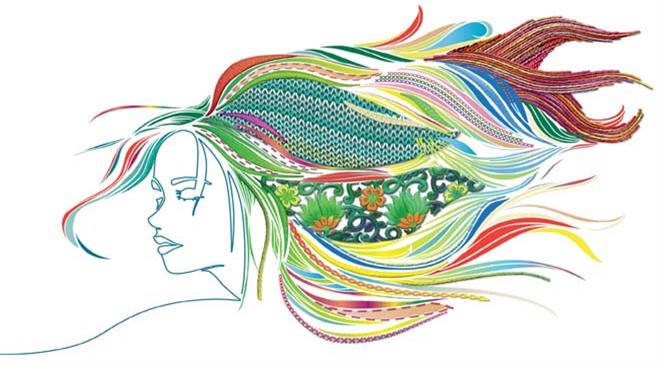Twine's DST technology can achieve millions of colours & shades through specialised inks and cloud based colour management algorithms
Twine Solutions is a technology start-up developing a proprietary and revolutionary digital thread dyeing system. Twine Solutions can dye a single, white thread to any requested length and colour. Yariv Bustan, vice president, product & marketing, discusses this avant-garde technology.
What glitches are you still working on?
Our core technology of digital printing has been developed and proved. Our focus now is on packaging the systems and solutions. It is crucial that customers feel the ease of using them since all they need to do is plug and play.
How did the idea of Twine DST (Digital Selective Treatment) come up? How long did it take to create the technology?
The company was founded in early 2015 by twin brothers Alon Moshe and Erez Moshe. Alon is the CEO. The name of the company is a play on the word twin and goes with the word twine, synonymous with yarn.
Both founders come from digital printing backgrounds in various executive management and R&D roles as do most of the company members. Digital printing is in our DNA. Although yarn is essential in the textile industry, there are analogies in the foundations of 'digital printing' but the substrate, instead of paper, is thread. Israel is the global market leader in digital printing technologies and Twine Solutions is in its epicentre.

Which are your key markets? Where do you see potential?
Twine's technology addresses textile industries in general, and thread, in particular. Thread is in most things we use from clothing to shoes, beddings, car seats to upholstery. So, the product addresses a global need. We will be targeting the United States of America and Asia first. The rest will follow.
What is the percentage reduction of carbon footprints from DST vis-à-vis traditional methods?
The difference is huge. We do not use any water in our process while an enormous amount of clean water is used in conventional methods of dyeing in bulk. We do not use steam. This is just one aspect to reduce our carbon footprints. Others include saving energy, reducing logistics costs and management and eliminating dead stock. These translate into saving costs and expenses.
What are you doing to reach more buyers?
Marketing efforts are certainly required. We are engaged in discussions with certain stakeholders. We see good prospects for the unique systems we offer. We are well positioned to address our promises.
Which major events do you plan to participate in?
We are evaluating a few events worldwide. Once we finalise them, we will invite readers to meet us.
Does this technology require special inks? What is the speed at which thread can be dyed?
Twine's foundations are in the digital printing industry where Israel is the world's known centre. With its seasoned R&D team, including many who hold a PhD in the subject, Twine has developed its own proprietary ink formulae coupled with its proprietary system and processes for high quality digital dyeing. These enable us to work on many off-the-shelf threads and yarns. Printing is much faster than stitching speed of any sewing or embroidery system.

What is the range of colours and shades that can be created using your process?
Unlike general dyeing of discrete colours, colour is continuous with Twine's award winning, unique DST technology. It can achieve millions of colours and shades through specialised inks and colour management algorithms that are also very accurate.

Can the process be used on all kinds of threads?
We are focussing on polyester-type threads and yarns. Nylon will follow. Other materials will come later.
Does the technology require specific stitching/processing machines?
DST, Twine's award-winning technology, is application-agnostic, which enables us to address different stitching/processing machines. You can load a white off-the-shelf spool into the system, and you get coloured spool that can be used for sewing, knitting, embroidery, weaving and so on.
How much have you invested to develop this technology? By when do you hope to break even?
We are well backed by Gefen Capital. Investors like Haama are also coming from the industry. Twine is supported by the Israel Office of the Chief Scientist. We cannot disclose the exact investment yet.
What is the cost of installing Twine's DST system?
We will disclose our pricing when we are closer to our product launch. We know that from a customer's point of view the ROI of Twine system is incredible and will be between six to 12 months, depending on the customer's profile and usage. The most important plus is the flexibility customers get. They are not bound by the nightmare of acquiring large quantities or the iterations of coloured thread.
What percentage of the technology is used for sewing, weaving, embroidery, knitting, and quilting? Where else do you see new prospects?
Twines' technology is currently focusing on low volume, high mix applications. This means a relatively low volume of thread usage, with high frequency of changing colours. So all these categories are our targets. Market analyses show that sewing and embroidery will lead initially.

How will the technology develop further?
Twine's roadmap is written. Thread is thread, and DST helps us augment technology through direct colour to fabric; going ahead it will explore further application opportunities like applying varying materials to thread. We are looking at a fully integrated direct online system towards specific thread required machineries such as weaving, knitting and sewing systems. Since DST is application-agnostic, it will enable us to address other applications like medical, wearables, technical textiles and more. (HO)





